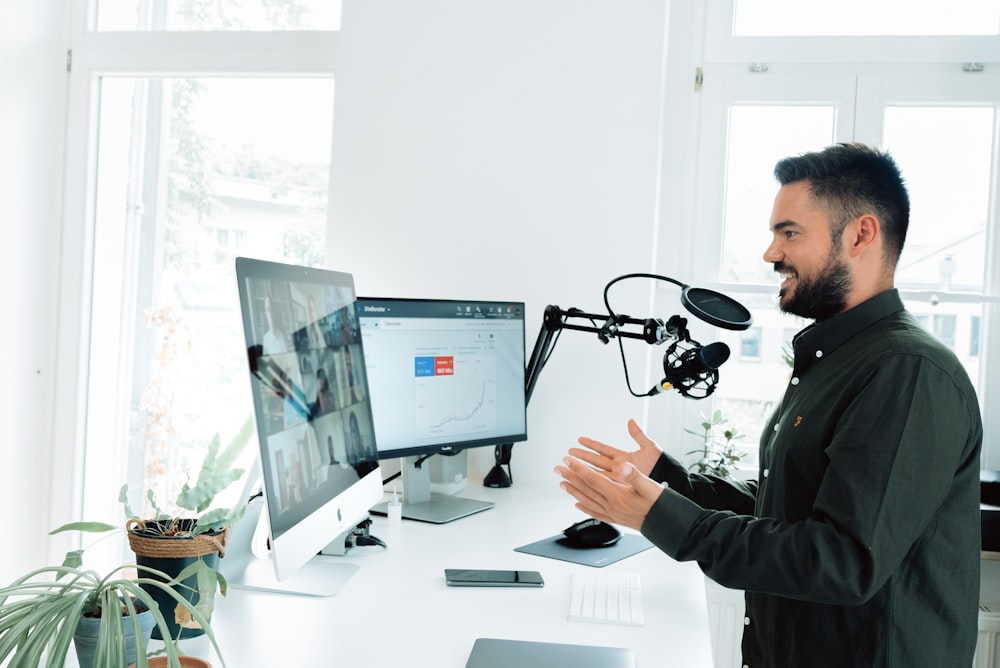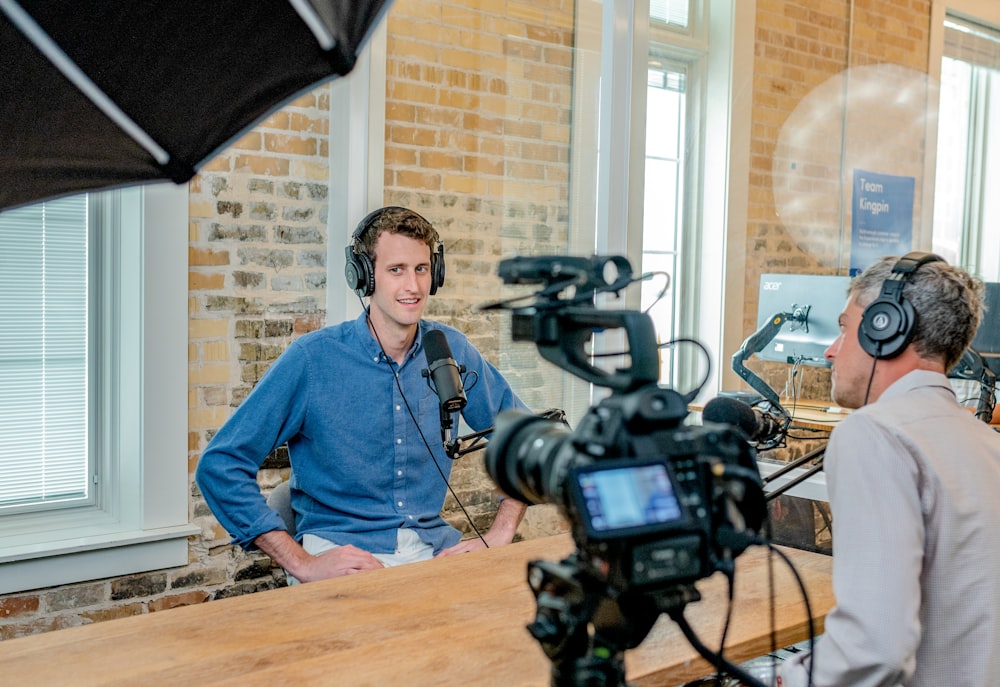Are you looking to position your business as an authority in your space? If so, webinars and virtual events are a great way to do that. In a survey of 2,000 businesses in 2020, nearly every marketer said webinars represented a critical part of their marketing plan.
However, putting on successful webinar presentations can seem like a lot of work. Where do you even start?
In this guide, you’ll learn:
- The importance of using a reliable webinar presentation template
- Different ways to structure your webinar
- The key steps to developing a killer webinar outline
Read further to discover how to create and organize virtual events more efficiently and easily.
Top 3 Reasons to Have a Webinar Outline or Structure
Whether or not you enjoy public speaking, I bet you don’t like getting on stage without preparing for a speech or keynote address.
Preparation is key to delivering an engaging, valuable presentation; and, thus, should be a part of your webinar strategy.
You and your webinar attendees may be at home and behind a screen, but that doesn’t mean your virtual events are less important to prepare for (or can be less nerve-wracking).
To help your preparation, consider writing a webinar script.
Using the free webinar script template in our Automated Webinar School will guarantee your webinar presenters and panelists stay on topic. This will also ensure you deliver a relevant, actionable webinar that doesn’t waste the time and effort of your target audience.
Here’s precisely why you’ll need an outline template for your future webinars:
1) It improves the flow of your webinar.
A comprehensive webinar outline for your virtual event can help keep the conversation flowing while also allowing for unplanned insights from you and your guest speakers.
An effective webinar presentation outline can direct topics, systematically explaining to your audience the essential steps necessary to achieve their desired outcome.
2) It guides presenters to share information in ways that make great sense.
If you want your webinar presentation to be successful, you need to have a solid outline. This will ensure that your delivery makes sense to your target audience and that you cover all the crucial points.
A webinar template is helpful for your team and partners when creating webinar content. It gives a clear idea of what slides to include, what topics to cover, and what key points to hit.
A well-structured outline will also help keep your speakers on track and focused on the task at hand.
3) It keeps presenters or speakers confident.
When a lot of information is coming at once, it can be easy to overlook what comes next. Nothing is worse than ending your talk, only realizing that you have no idea what to do next.
Having an outline beforehand helps everyone on the team feel confident and ready for all future lines without any hiccups because they know exactly where everything fits into place before going in-depth with each step.
5 Ways to Format Your Webinars
What’s the best way to deliver webinar content? It depends!
Here are the common ways to structure your next webinar:
Panel and fireside chats
Webinars organized in a panel or discussion format involve multiple participants discussing a topic. However, it is important to balance the webinar flow with the natural discussion to avoid missing key points.
The fireside chat is a more casual style of presentation, like the conversation you would have with your best friend, but it includes many other people.
Whether you opt for a panel discussion webinar or fireside chat, both speaking styles have the same slide decks. A good webinar presentation template allows you to add infographics and logos and even modify the color scheme to match your brand.
Interviews
Interviews are webinars that follow a series of questions. The answers to these questions determine the flow of the conversation. These events are typically problem-solution based.
Before the interview, share a list of questions with your guest. This will give them time to prepare their answers and fill in any gaps. By doing this, both parties will better understand what to expect during the live event.
The format of the interview will greatly depend on who you are interviewing and what information you hope to get from them. You can tailor your questions to specific industry needs or simply ask your interviewee about their personal experiences. Make sure to gain valuable insights from your conversation.
Case Studies
Webinar presentation slides featuring a happy customer case study can be effective sales tools.
Having a customer share their experience with your product or service allows viewers to hear testimonials from someone who has tested it. This will also allow them to ask existing clients questions about how your service has helped them.
Adding videos and other interactive features to complement the customer’s story will keep your audience engaged.
Training
Webinars can help keep your employees up-to-date on the latest industry trends and techniques.
As we all know, businesses need a flexible workforce now more than ever. The pandemic has caused so much disruption across many different aspects of life.
Businesses need flexibility on tech so that people can continue getting assistance for growth opportunities outside of work as well. And webinars are great ways to do so.
Product Demos
Use your product demo webinar as a sales tool to convert leads into sales. Show potential customers and current clients how to use your product or service. Use tools such as screen sharing, additional videos, and webinar slides, or show them physically on camera.
A live webinar allows you to engage with your attendees and answer any audience questions in real-time to make sure that they truly understand how your product or service functions. Choose a host who knows your product inside out and can explain all the details clearly to help boost confidence in your business.
Indeed, there are many different structures for webinars, and each option will have its own unique outline. The outlines you deliver will depend on the webinar structure that best suits your needs.
5 Steps to Creating Your Webinar Outline Template
A good webinar outline provides guidance and structure for the speaker. It should give the speaker(s) enough information to discuss the content in a well-organized manner without making the conversation seem unnatural.
A common webinar format is a keynote presentation, which can be outlined as follows:
Step 1: Introduction
The purpose of the introduction is two-fold – to introduce and emphasize the speakers’ authority and establish timelines for your webinar.
A productive start also sets expectations with the webinar attendees by describing what they can expect from your event.
The key points to include in your webinar introduction include:
- The speaker
- The webinar topic
- Perks of watching the webinar until the end
- Relevant tech information
- If there will be a Q&A at the end, including what questions will be accepted and for how long
The best way to start your webinar is by giving viewers an opportunity they will not want to miss. A strong kickoff makes them interested in watching the rest of it and asking questions during Q&A sessions at the end.
Step 2: The Problem
The best way to deal with a problem is by acknowledging it upfront.
You can take multiple approaches here. For instance, simply introducing the issue at hand all of a sudden in an interview about what’s bothering you. Or break those problems down into three sub-stages:
- The Problem
- Cause
- Effect/Resolution
You may not need every one of these at once. But it’s important that when addressing problems, be clear enough, so there isn’t confusion.
Step 3: A Solution
Solutions are found in every problem. It’s important to find the best one, though, because if your customers can see that you’re not confident enough about yours, then they’ll go elsewhere for their needs met.
Make sure it has data backing up its claims so when people ask questions on social media or email support services – as we all sometimes do – the answer won’t get lost among other responses sent out by companies who don’t know what works either way.
Among the data you can use to back your claims are:
- Authorities
- Industry experts
- Your own research
Compile all the references into a bibliography and make it available as a downloadable factsheet. That way, viewers can download the data in another format. They can check if they doubt any numbers you stated by looking at these sources. Also, make it readily accessible online for anyone who needs more information on this topic.
Step 4: Q&A Session
Keep the engagement strong by using a question-and-answer session at the end of your webinar. This gives you an opportunity to:
- engage with attendees
- build relationships within it (and outside!)
- resolve any remaining problems before they arise
For this reason, prepare frequently asked questions (FAQs) in advance, so they are already ready when someone does ask something unexpected – rather than coming up short on answers.
Step 5: Strong Call-to-Action
You don’t want attendees to leave your webinar feeling like they’ve been ignored. To show them how much their attendance matters, offer a call-to-action slide at the end that will help bring them closer to achieving success with whatever goals or objectives were set out before signing up.
If a top-of-funnel viewer is what you’re looking for, then discounts and free trials are perfect. But if their interest has been peaked by other means (like downloads), demos might be more appropriate to reel them in at the end of your sales path.
Conclusion
The structure is important for webinars, but it is also essential to stay flexible. Also, allow pertinent information to flow naturally.
For example, if your audience members are posing questions during a panel session, then you might want to answer them so long as their answers are not irrelevant.
Moreover, webinar outlines are a great way for speakers to make sure their information is organized in an easy-to-follow format. They also help them build powerful messages as it guides data and key points throughout the presentation.
We hope that you now have a newfound confidence and inspiration on how to create a webinar presentation that converts. But if nothing else has worked yet, or you are still unsure how to put on an automated event or use an automated webinar platform the right way, sign up now at our Automated Webinar School, where we provide all of these tools, including templates.




